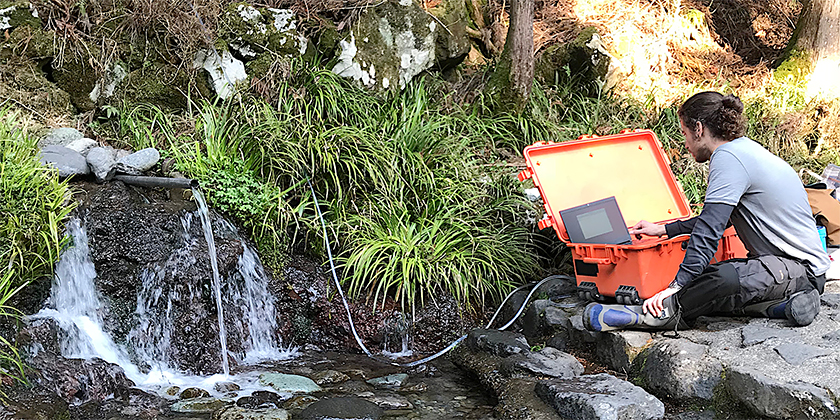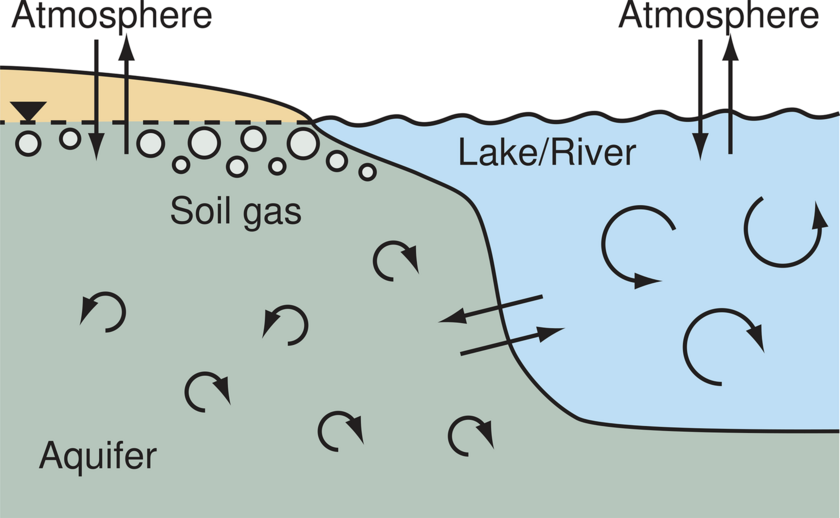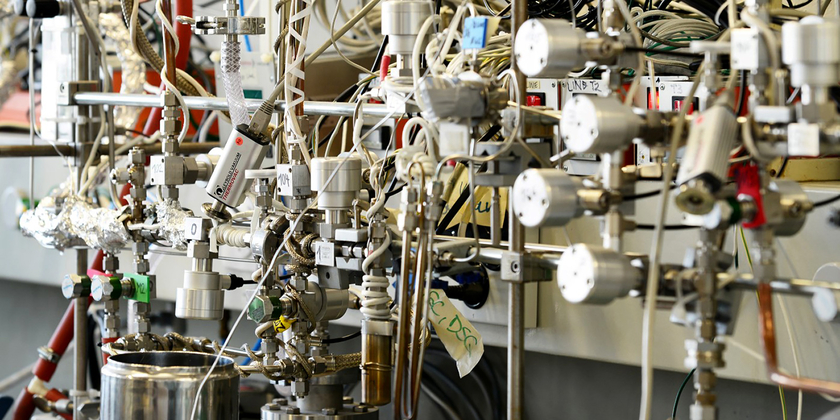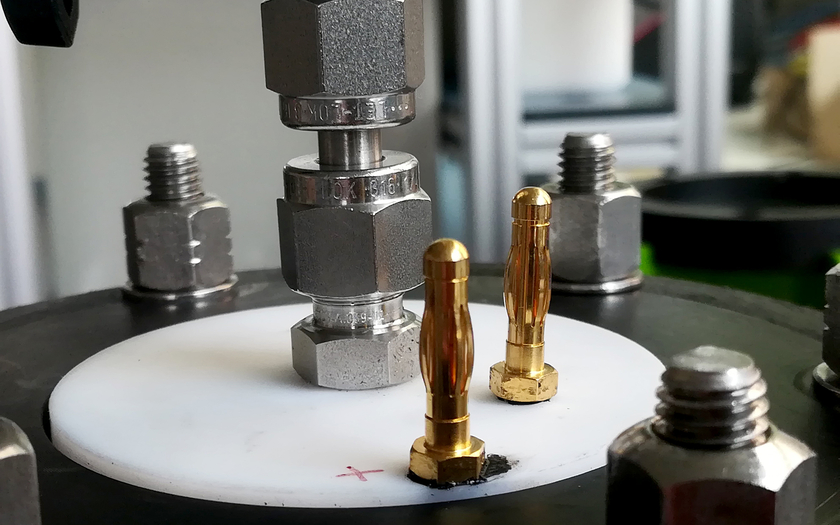Tracer Lab

Exploring aquatic systems requires a deep understanding of the origins, transport, mixing, and fate of the water and its solutes. The Environmental Tracer Lab provides advanced methods and techniques utilizing environmental tracers to examine and quantify the dynamics within aquatic systems:
- "Dating" water samples: Determining the residence time of water since its last contact with the atmosphere.
- Mixing and transport: Identify different fluid types and quantify their transport and mixing rates.
- Gas exchange: Assessing the exchange of gases between a water body and the atmosphere or other gas reservoirs.
- Deciphering physical processes from biogeochemical turnover: Separating and quantifying the effects of physical processes and biogeochemical transformation of gas species.
- Reconstruction of past environmental conditions: Examining historical physical conditions in aquatic systems (paleotemperature, paleosalinity, groundwater level dynamics).
The Environmental Tracer Lab develops and offers a suite of analytical techniques centered around gas species (noble gases and biogeochemically active species) and environmental isotopes (both stable and radioactive). The tracer expertise of the Lab provides essential insights into the physical and biogeochemical dynamics of aquatic systems.

Noble gas mass spectrometry
Analysis of He, Ne, Ar, Kr, Xe and their isotopes (also 3H/3He dating, see below). The noble gas lab is situated at ETH Zurich, where we operate the lab in close collaboration with the ETH Isotope Geochemistry and Cosmochemistry group.
miniRUEDI and GE-MIMS-APP
Continuous on-site analysis of gas species in water and other environmental fluids. The portable miniRUEDI mass spectrometer and the patented GE-MIMS-APP technique (both developed at Eawag) provide a simple but efficient tool for combined quantification of inert and biogeochemically active gases. Such data allow integrated analysis of physical, chemical and biological processes.
Transient trace gases
The concentrations of inert trace gases (SF6, CFCs, CF4, etc.) dissolved in water bodies correspond to their atmospheric partial pressure at the time of atmosphere/water exchange. Comparing the concentrations of these gases in a water sample with their transient atmospheric evolution therefore allows “dating” of the water sample. The lab incorporates a system for combined analysis of SF6 and noble gases, and we are developing a simple sampling technique to allow analysis of a whole suite of transient trace gases using the MEDUSA trace-gas analyzer (EMPA Group for Climate Gases).
Inverse modelling of tracers in environmental systems
We provide expertise and numerical tools to interpret tracer data in terms of the processes and conditions pertaining to gas/water exchange and water recharge, or to apply transient tracers for dating of water samples.
Radionuclides
We incorporate various techniques for the analysis of radionuclides in aquatic systems:
- 3H analysis at ultra-trace levels by 3He ingrowth and subsequent He isotope analysis. This technique is typically combined with noble gas analysis for 3H/3He dating of water samples.
- 3H isotope enrichment by electrolysis and subsequent analysis by liquid scintillation counting (LSC).
- Gamma spectrometry for analysis and monitoring of radionuclides in the environment (isotopes of Cs, Co, I, Lu, Mn, Pb, Zn, etc.)



